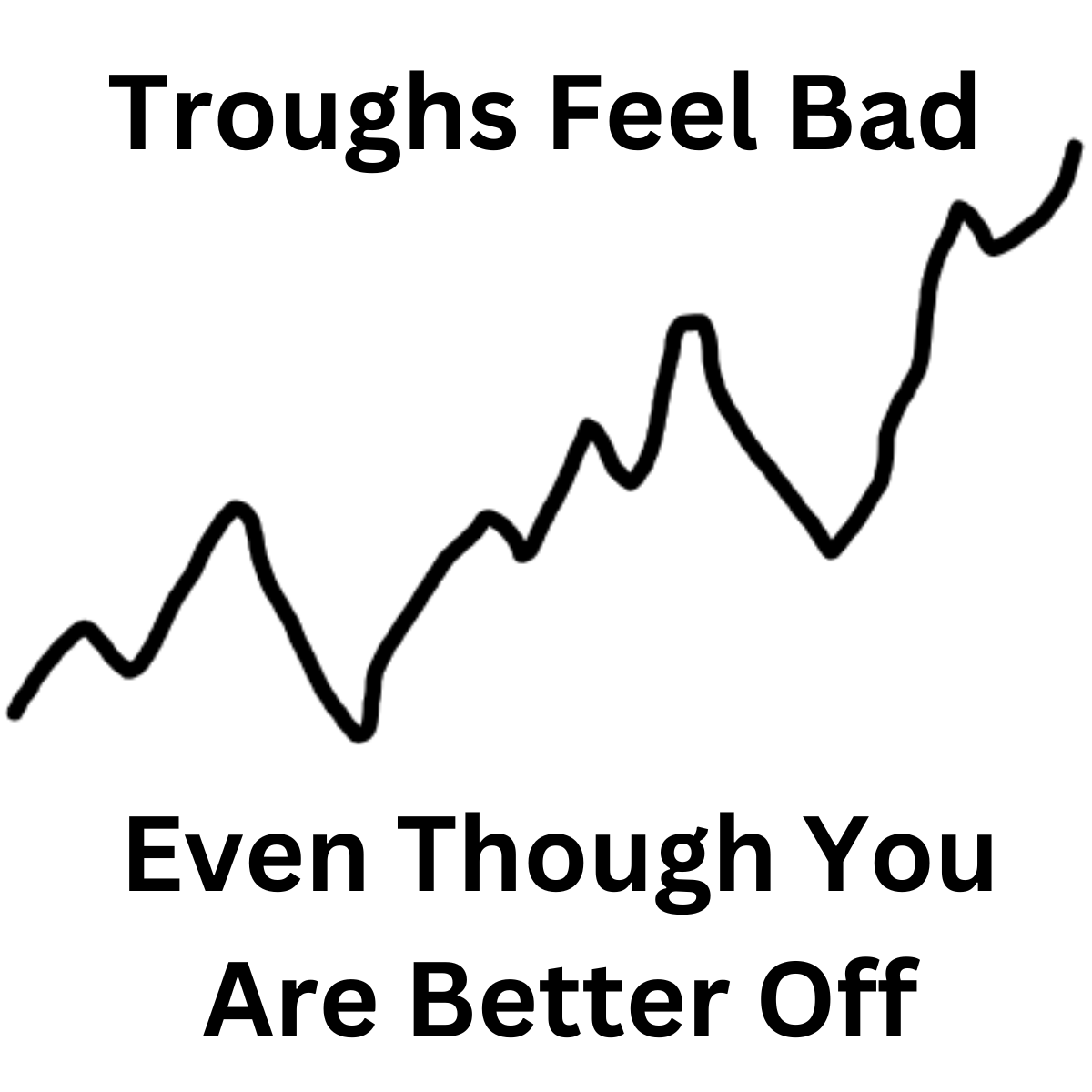A trough, in general terms, refers to a low or bottom point in a cycle or a series of events. It’s a metaphorical valley nestled between peaks, symbolizing the lowest ebb in a fluctuating sequence of occurrences or states. In the context of life experiences, emotions, economies, or even natural phenomena, a trough represents a period of downturn, minimal activity, or reduced vitality before an inevitable rise or recovery.
In simple terms, they suck. It always feels bad to be in decline. It is perfectly normal to feel worse when you are in a declining state. However, we should not be despondent because each time we improve, we raise the lowest point of our troughs, producing an overall upward trend. We should look at our lives from the perspective of a moving average over a long period of time rather than a microscopic view of our current state of affairs.
In data analysis, a trough refers to the lowest point in a data set or time series before it begins to rise again. It is the opposite of a peak, which is the highest point before a decline. Troughs are important in various analyses because they can indicate the bottom of a cycle or period of decline, after which performance, values, or metrics start to improve. Identifying troughs can be crucial in trend analysis, economic cycles, market analysis, and any field where understanding the timing and duration of cycles is important. For instance, in economic data analysis, a trough can signify the end of a recession and the beginning of a period of growth.
Troughs in data analysis, much like the lows in life, can represent challenging periods that feel difficult even when they occur at a higher level than previous lows. This phenomenon reflects the psychological and emotional experiences individuals might face during downturns or setbacks, regardless of their overall progress or success. Several factors contribute to why a trough can feel disheartening, even if it represents a higher point than before:
- Relative Perception: Humans have a tendency to evaluate their current state in comparison to their recent experiences rather than in absolute terms or against more distant points in the past. Thus, a downturn feels negative because it is a departure from the recent peak, irrespective of the long-term trend.
- Recency Bias: People often give more weight to their most recent experiences. A recent decline or setback can overshadow the memory of past achievements or the recognition that the current low is actually higher than previous ones.
- Expectation vs. Reality: Individuals may set expectations based on their peaks rather than their troughs. When a decline occurs, the discrepancy between what was hoped for and what is can lead to disappointment, even if the objective situation has improved over time.
- Loss Aversion: Psychologically, losses or declines are felt more acutely than gains of equivalent size. This means a trough can feel disproportionately bad compared to the satisfaction derived from an improvement to a new peak.
- Uncertainty and Fear: Each trough brings with it uncertainty about the future. Even if it’s at a higher level than before, there’s no guarantee that the trend will continue upward, leading to anxiety about potential future declines.
- Adjustment to New Norms: As people achieve higher levels of success or well-being, their expectations and baselines adjust upwards. A trough at a new, higher level might still fall below these adjusted expectations, leading to a sense of underachievement or failure.
Understanding these dynamics can help in navigating the emotional landscape of life’s ups and downs, emphasizing the importance of perspective, resilience, and the recognition of overall progress over time. Just as in data analysis, where a series of higher troughs indicates an underlying positive trend, in life, it’s beneficial to recognize and appreciate overall growth and progress, even during temporary setbacks.




